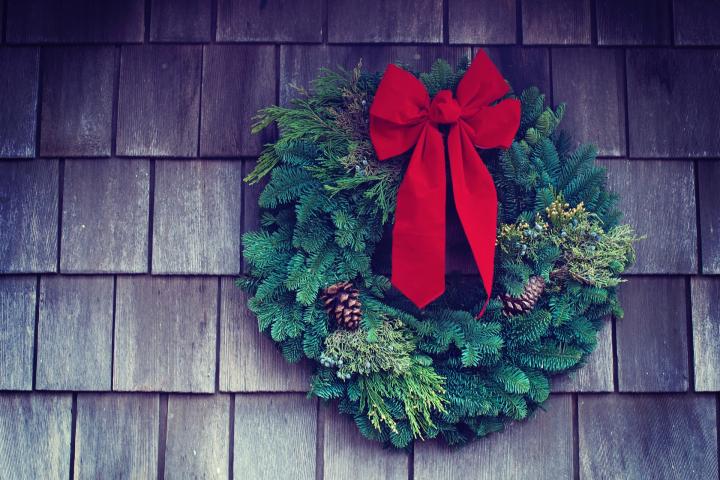
What Does a Wreath on Your Door Symbolize?
ADVERTISEMENT
I like to use a grape vine hoop and tuck the greens into the stems. It is good to avoid using metal wire, or coat hangers, for ease of composting. Please avoid using invasive or non-native plants if possible. No Oriental Bittersweet, Japanese Barberry, Wild rose hips ,Moonseed vine or anything else you don't want growing on your compost pile or spread by birds .Cheers
Wreaths also were used to show the death of someone in the home.
A word of caution putting a wreath on a vehicle's grille. After spending many years in the automotive repair business, it was seen many times that when the needles on the wreath are dislodged, they will be sucked into the radiator and/or A/C condenser by the fan and plug the fins and result in a very overheated cooling system causing at times the hoses and/or radiator blowing apart, even in the dead of winter.
How long does a real (as in, not fake/plastic) wreath last? An how to care for it to make it last??
They tend to last quite a while—2-3 months, depending on where they’re kept. A wreath will last longer hung in a cool, shady spot than in a location that gets full sun, which will dry out and could discolor the pine boughs.
Hey very interesting to read the symbolic meanings of the ingredients use to make home made wreaths. Think I'll try to get my family interested in giving wreath making a try next year. Some for personal use, and perhaps some for gifts to others.
Tues. Dec. 17th. 2019 06:50 hrs.
Tis truly nice to read such pleasant articles in The Old Farmer's Almanac!
Merry Christmas & a Excellent Yr. in 2020 of Health & Prosperity!
Time as an adult passes through so quickly that we as adolesents do not
know / appreciate the miracle of one's life cycle! Chirstmas to me has al-
ways meant such a tremendous time for Family, Relegion, the God sent
richness of hope, sharing, caring and of course the Birth of Jesus! The
pagentry is so marvelous it lingers in our minds the rest of our lives! We
marvel at the subtleness of what it truly means to be enlightened by a
Wreath, Christmas Tree, Snow, Winter sports, Home cooking, the time
away from the dreary everydy life as Christmas slows the pulse to a
quainted motion of stillness and We All absorb it in Spirit, Emotion,
Smell & most of MEMORIES, just like I am doing now! May every-
one at The Old Farmers's Almanac & your Families and Friends
cherrish such a wonderful excise of LUVV!!! Hallelujah & Praise be
to the Most Hight! Amen.....
Sincerely & Fraternally,
N.F.B. Mason..............










